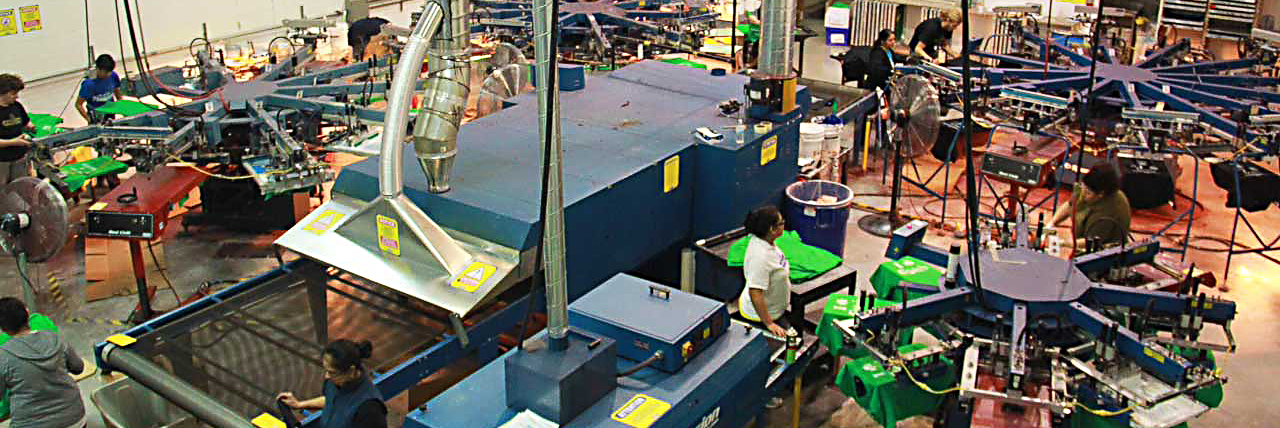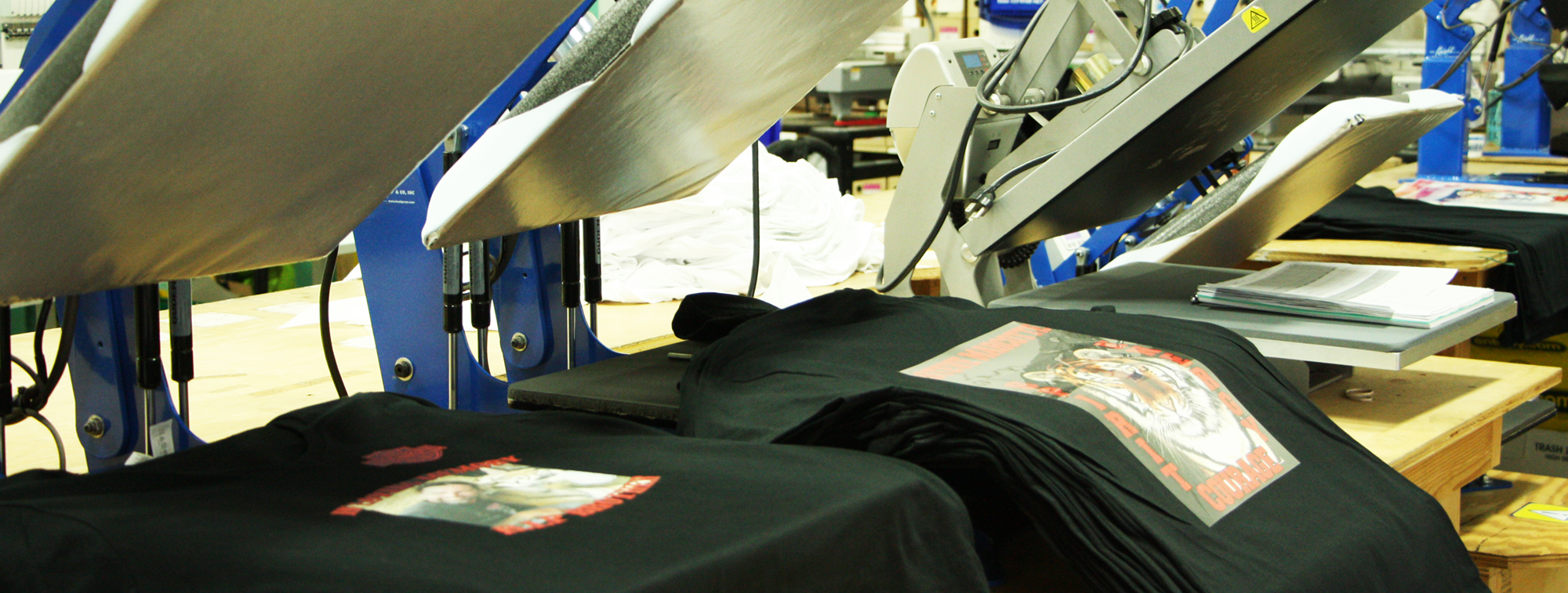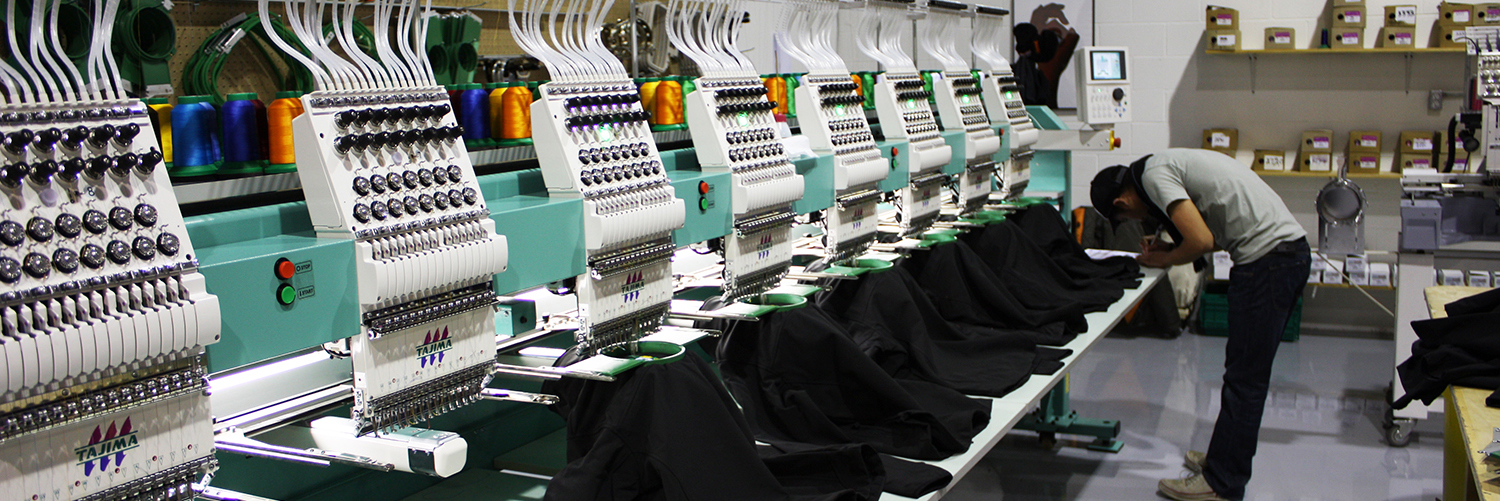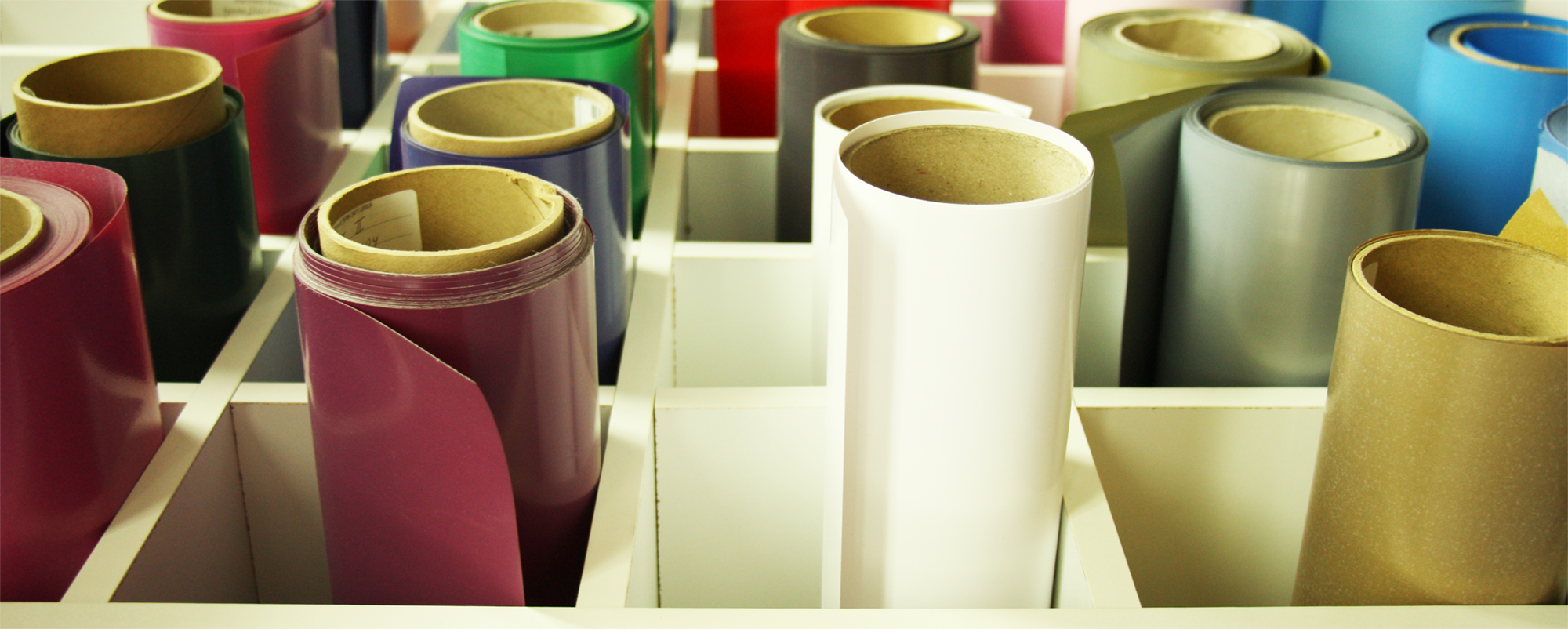Types of Printing
If you have a design or logo that you need to put on any type of garment, be it a custom t-shirt, hooded jumper, or an embroidered sports / work shirt, we can do it! Whether you need 6 custom t-shirts for a family reunion / stag & hen party or 100,000 custom t-shirts for your company, we can take care of you and offer one of the most competitive quotes on the market.From Screen Printing to Vinyl to Sublimation, our methods of printing offer a variety of design services, all done at our Galway, Ireland facility
Screen Printing
Screen printing is one of the most common methods of printing for custom t-shirts, hoodies, and other custom apparel products. In screen printing, your custom design is exposed onto a silk mesh screen, washed, set up on our press then using a squeegee-type blade, the ink is passed through the screen onto the shirt. The ink is then dry cured through a conveyer dryer which raises the temperature of the ink to 180 degrees Celsius.
Savvy Print use only the finest quality Plastisol inks, which are free of harmful leads and Phthalates and as well ensure a vibrant colour that will not crack, chip or fade. Even after hundreds of washes, custom t-shirts made through screen printing should maintain their appeal, although we like to remind our clients that their wear and care for the custom garment will affect its lifespan.
The cost of screen printing varies by quantity and the number of colours in your design. Each time a colour is added to the design, a new screen needs to be made.
Digital Printing
Digital Printing typically caters to smaller custom orders or orders that involve extremely detailed and colourful artwork. Savvy Print’s digital methods of printing allows you to have full-colour artwork that features a print so crisp and exact, it looks just like a photograph. In digital printing, your logo is printed onto a special media which is then weeded and heat-pressed onto the customised garment. There will be a background behind your design, but we will match this as closely as possible to the garment colour.
The cost of using digital printing does not change based on the number of colours in your customised design, but varies depending on the size of area that needs to be covered.
Custom Embroidery
In custom embroidery, your design is sewn onto your chosen garment using a needle and polyester thread. Savvy Print can embroider hats, custom hoodies, golf shirts and customised jackets.
With custom embroidery, a backing is put on the inner portion of the garment to keep the stitches together and ensure the design does not unravel. The backings are extremely durable and meant to last the test of time.
Embroidery is a fully automated process where the machines read a digitised pattern from a file and reproduce the pattern. Digitising is a process whereby your artwork is converted into digital data by plotting the points of the design. Some custom logos will have to be simplified to achieve the best embroidery results for your custom clothing.
The cost of embroidery varies based on the number of stitches in a logo. The larger and more detailed the logo, the higher the stitch count will be.
Sublimation
Sublimation is a simple but effective form of digital printing, used for printing high quality images and graphics onto polymer surfaces. It can be used to print onto promotional items such as mouse mats and mugs, and in the case of textiles, t-shirts with a high polyester content.
The primary benefits of sublimation are
1) The image is permanently dyed into the fibres of the fabric
2) It will not fade, crack or wash out
The important thing to remember is that this is not truly an ink. It is a DYE that re-colours the fibres it binds to. You cannot dye a dark garment a light colour; you would first have to bleach it. In addition, the sublimation dyes are semi-transparent, which means that the background colour will always affect how the dye looks in the end. This is the same with any lightweight ink or dye. For example, print a full-colour image on a white piece of paper. Now print it onto a yellow piece of paper. The background colour of the paper will affect how the print looks, and it is the same principal for sublimation.
So for sublimating onto coloured fabrics, the design should be a significantly darker shade than the fabric. Black or tonal solid colours work well. If you want to add some colour, choose the right design. Remember that any white areas in the image will not be transferred onto the fabric and will appear the same colour as the garment.
The cost of using sublimation printing does not change based on the number of colours in your customised design. It only varies depending on the size of area that needs to be covered. This makes it an attractive methods of printing for sports events.
Vinyl
Vinyl material is used to personalize names and numbers on custom clothing. Our range of vinyl is an extremely thin material, which produces a “no feel” finish. It also has great stretch ability and a permanent adhesive. A heat press is used to pre-heat the garment for 4-6 seconds to avoid excess moisture and wrinkles. The print design is then positioned on the garment, sealed and heated for another 20 seconds. The mask is removed while the garment is still warm.
The cost of Vinyl printing depends on the size of the print and the number of colours in the print




